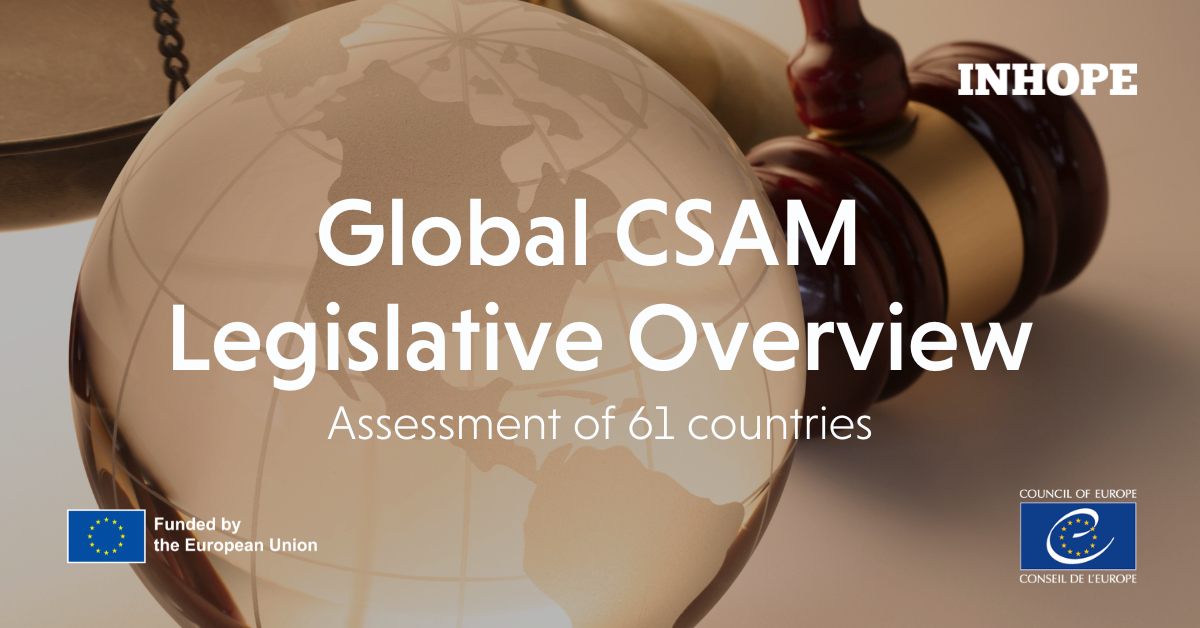Article
Industry News & Trends
Projects
Global CSAM Legislative Overview 2024
INHOPE is launching the second edition of the Global CSAM Legislative Overview, a vital document that reviews child sexual abuse material (CSAM) legislation across 61 countries.
Collaboration and data-exchange among INHOPE member hotlines is essential to enable the rapid identification and removal of illegal content online, particularly CSAM. However, operating across different legal jurisdictions presents significant challenges, especially when it comes to classifying content—what is illegal in one country may not be in another. This issue is further complicated by the rise of new technologies like Artificial Intelligence (AI), which continue to reshape the online environment. These advancements highlight the urgent need for ongoing legal updates to ensure that vulnerable groups, particularly children, are effectively protected.
The second edition of the Global CSAM Legislation Overview offers a comprehensive look of CSAM legislation in 61 countries, including 49 INHOPE members and an additional 12 Lanzarote Convention State Parties without INHOPE hotlines. This report is crucial in addressing inconsistencies in regional and national laws, offering valuable insights into where legislative frameworks are robust and where they might require improvement. By clarifying these differences, the overview supports more cohesive and effective international strategies for protecting children from online abuse.
What are the goals of the overview?
- Outline the legislative differences and similarities in 61 countries across 5 continents.
- Serve as a reference list of national legislation around CSAM
- Support and encourage advocacy and outreach activities, as well as legislative improvement at the national, regional and international levels.
Key insights
- Most of the countries presented, 46 out of 61, still use the term 'child pornography' or similar terminology with a pornographic connotation to material depicting children in a sexually explicit behaviour.
- There is significant disparity in the legality of different types of CSAM content and context across these 61 countries.
- Digitally generated CSAM is considered illegal in most of the countries presented (40 out of 61).
- Drawings/manga/artistic interpretations of CSAM are illegal in most of the countries (44 out of 61). In 6 countries, the legality is strictly based on the context, and the realism of the content is a common determining factor.
Discrepancies in national laws create significant challenges for authorities and hotlines when classifying and handling potentially illegal content, especially material hosted or received from other jurisdictions. These legal differences highlight the need for stronger, harmonised national and regional laws to better regulate harmful content and combat this transnational crime more effectively. For more details on these disparities, refer to the Global CSAM Legislative Overview.
Access the Full Report
Access the Executive Summary
Access the Spanish Executive Summary
Access the French Executive Summary
Access the Greek Executive Summary
We would like to thank all member hotlines, the Lanzarote Committee and Lanzarote State Parties for their support and invaluable input in the creation of the second edition of the Global Legislative Overview of CSAM. We also wish to express our deep gratitude to the European Commission and the Council of Europe for the funding of this report.

Access the Full Report
Access the Executive Summary also in Spanish, French & Greek